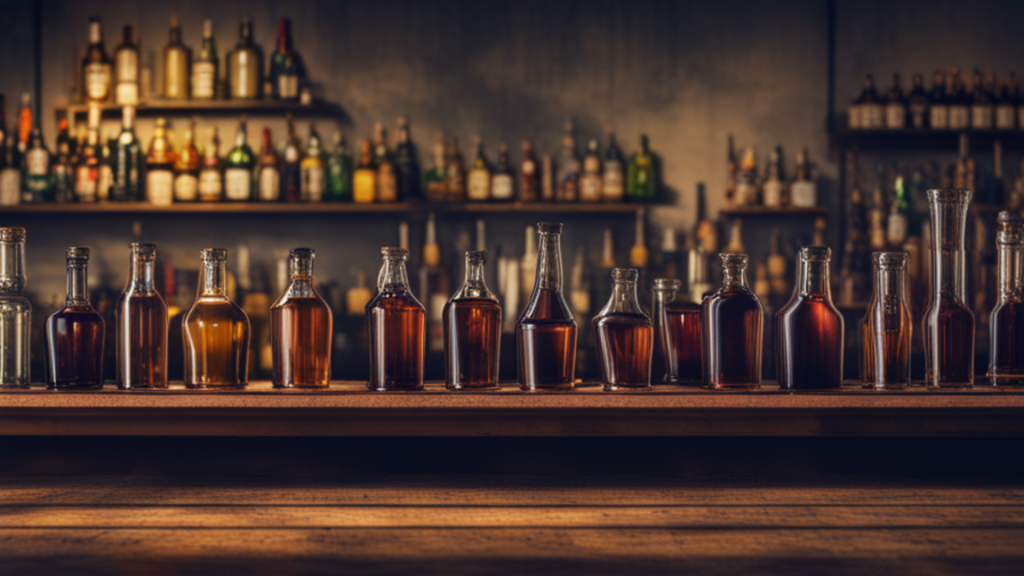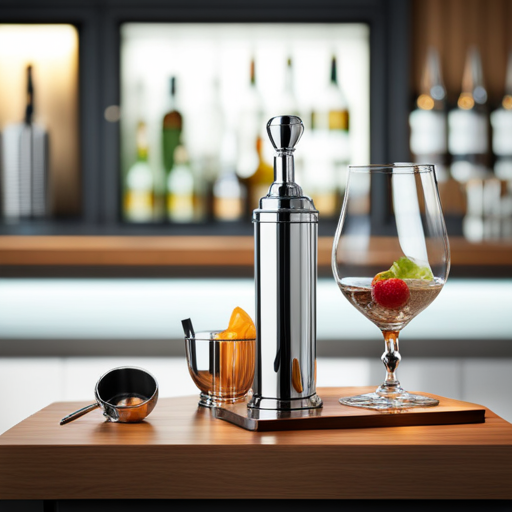Barolo Wine: A Comprehensive Guide to the King of Wines
Barolo wine, also known as the “King of Wines,” is a red wine produced in the Piedmont region of Italy. It is made from the Nebbiolo grape varietal, which is known for its high acid and tannin content. Barolo wine is considered one of the greatest Italian wines and is highly sought after by wine enthusiasts around the world.
The Barolo wine region is located in the Langhe hills of Piedmont, northwest Italy. The area is known for its unique soil composition and microclimate, which are ideal for growing Nebbiolo grapes. The region is divided into 11 communes, each with its own distinct terroir, resulting in a diverse range of Barolo wines. The wine is aged for a minimum of three years, with the best Barolos aged for up to ten years or more.
Barolo wine is often compared to Nebbiolo wine, as they are both made from the same grape varietal. However, Barolo wine is considered to be the more complex and full-bodied of the two. It is also known for its high tannin content, which gives it a long aging potential. Barolo wine is often described as having flavors of red fruits, dried herbs, flowers, and spices, with a distinct tar and rose petal aroma.
History of Barolo Wine
Barolo wine is a red wine produced in the Piedmont region of Italy, specifically in the Langhe hills in the province of Cuneo. The wine is made from the Nebbiolo grape varietal and is known for its rich, complex flavors and high tannins. Here is a brief history of Barolo wine.
Origins of Barolo Wine
The origins of Barolo wine can be traced back to the early 19th century. At that time, the wine was a sweet wine that was popular among the nobility in the Piedmont region. However, in the mid-19th century, a winemaker named Camillo Benso, Count of Cavour, began experimenting with the Nebbiolo grape varietal to create a dry wine that could be aged for many years.
Barolo Wine Production Through the Ages
In the late 19th and early 20th centuries, Barolo wine became more popular among wine enthusiasts. However, production was limited due to the difficult growing conditions of the Nebbiolo grape varietal. In the 1960s and 1970s, there was a revolution in Barolo wine production, with winemakers experimenting with new techniques to improve the quality of the wine.
Today, Barolo wine is produced in several different styles, depending on the winemaker’s preferences. Some winemakers prefer to age their Barolo wine in oak barrels, while others prefer to age the wine in stainless steel tanks. The wine is also produced in several different sub-regions within the Piedmont region, each with its own unique flavor profile.
In conclusion, Barolo wine has a rich history that spans several centuries. From its origins as a sweet wine to its current status as one of the most sought-after red wines in the world, Barolo wine has come a long way. Whether you are a wine enthusiast or simply enjoy a good glass of wine, Barolo wine is definitely worth trying.
Barolo Wine Region
The Barolo wine region is located in the Piedmont region of Italy and is known for producing some of the world’s finest wines. The region covers an area of approximately 5,000 acres and is home to over 1,000 wine producers. The region is named after the village of Barolo, which is located in the heart of the region.
Geography of the Barolo Wine Region
The Barolo wine region is located in the hilly area of Piedmont near the town of Alba. The region is characterized by its steep hills and valleys, which are covered with vineyards. The altitude of the vineyards ranges from 200 to 500 meters above sea level.
Climate of the Barolo Wine Region
The Barolo wine region has a continental climate with hot summers and cold winters. The region is protected from harsh winds by the Alps to the north and west, which helps to create a microclimate that is ideal for growing grapes. The average temperature in the region is around 14°C.
Soil of the Barolo Wine Region
The soil in the Barolo wine region is composed of clay, limestone, and sand. The soil is rich in minerals and nutrients, which helps to produce grapes of exceptional quality. The soil in the region is also well-drained, which helps to prevent the grapes from becoming overripe.
Vineyards in the Barolo Wine Region
The vineyards in the Barolo wine region are planted with the Nebbiolo grape, which is the only grape variety used to produce Barolo wine. The vineyards are planted on steep hillsides, which helps to maximize sun exposure and drainage. The vineyards are also planted in terraces, which helps to prevent soil erosion.
In conclusion, the Barolo wine region is a unique and special place that produces some of the world’s finest wines. The region’s geography, climate, soil, and vineyards all contribute to the exceptional quality of the wines. If you are a wine lover, then the Barolo wine region is definitely worth a visit.
Barolo Wine Characteristics
Barolo wine is a highly regarded Italian red wine that is made from Nebbiolo grapes grown in the Piedmont region of Italy. It is known for its complex and robust flavor profile, as well as its ability to age well. In this section, we will explore the various characteristics of Barolo wine.
Taste and Aroma of Barolo Wine
Barolo wine is known for its complex flavor profile, which typically includes notes of cherry, raspberry, licorice, and tar. It is also known for its high acidity and tannins, which give the wine its characteristic structure and mouthfeel. In terms of aroma, Barolo wine often has floral notes, such as rose, as well as earthy undertones.
Color of Barolo Wine
Barolo wine has a translucent brick-red color that is deceptively light in body. This color is a result of the Nebbiolo grape’s thin skins, which do not impart a lot of color to the wine. However, Barolo wine is still a full-bodied wine despite its light color.
Alcohol Content of Barolo Wine
Barolo wine typically has an alcohol content ranging from 13.5% to 15%. This is slightly higher than the average alcohol content of most red wines, which is around 12.5%. The higher alcohol content of Barolo wine is a result of the warm climate in the Piedmont region, which allows the Nebbiolo grapes to ripen fully.
Aging Potential of Barolo Wine
Barolo wine is known for its ability to age well. In fact, many Barolo wines are not released for sale until they have been aged for at least three years, with some wines being aged for up to ten years or more. This aging process allows the tannins in the wine to soften and the flavors to become more complex and nuanced.
In conclusion, Barolo wine is a highly complex and robust red wine that is known for its unique flavor profile, light color, high alcohol content, and aging potential. Whether you are a seasoned wine connoisseur or a casual wine drinker, Barolo wine is definitely worth trying.
Barolo Wine Production
Barolo wine is produced in the Piedmont region of Italy and is made from the Nebbiolo grape. This wine is known for its complex flavor profile, high tannins, and ability to age for decades. The production of Barolo wine is a meticulous process that involves several stages, including grape harvesting, crushing, fermentation, aging, and bottling.
Grape Varieties Used in Barolo Wine Production
The Nebbiolo grape is the only grape variety used in the production of Barolo wine. This grape is known for its thick skin, high tannins, and acidity. The grape is harvested in late October and is left to ripen on the vine until it reaches optimal ripeness. The grape is then hand-picked and sorted to ensure that only the best grapes are used in the wine production process.
Harvesting and Crushing of Grapes for Barolo Wine
After the grapes are harvested, they are crushed to extract the juice. The juice is then transferred to stainless steel tanks for fermentation. The skins and seeds are left in the tanks to add color, tannins, and flavor to the wine. The fermentation process can take up to three weeks, during which time the wine is monitored closely to ensure that the temperature and acidity levels are optimal.
Fermentation and Aging of Barolo Wine
After fermentation, the wine is transferred to oak barrels for aging. The wine is aged for a minimum of two years, with at least one year in oak barrels. The oak barrels add flavor and complexity to the wine. Some Barolo wines are aged for up to 20 years, which gives them a rich and complex flavor profile.
Bottling and Storage of Barolo Wine
After aging, the wine is bottled and stored in a cool, dark place to allow it to mature further. Barolo wine is known for its ability to age for decades, and many wine collectors will store Barolo wines for years before opening them. When stored properly, Barolo wine can continue to improve in flavor and complexity for many years.
In conclusion, the production of Barolo wine is a meticulous process that involves several stages, from grape harvesting to bottling and storage. The Nebbiolo grape is the only grape variety used in the production of Barolo wine, and the wine is known for its complex flavor profile, high tannins, and ability to age for decades. When stored properly, Barolo wine can continue to improve in flavor and complexity for many years.
Barolo Wine and Food Pairing
Barolo wine is a robust and full-bodied red wine that originates from the Piedmont region of Italy. This wine is known for its high tannin content, high acidity, and complex flavors that make it a perfect match for a variety of foods. In this section, we will explore traditional and modern food pairings for Barolo wine.
Traditional Food Pairings for Barolo Wine
Barolo wine has a long history of pairing well with traditional Italian dishes. Some of the classic food pairings for Barolo wine include braised beef, roasted lamb, and rich pasta dishes with tomato-based sauces. The high tannin content of Barolo wine makes it a natural match for fatty meats, while the acidity helps to cut through the rich flavors of tomato-based sauces.
Another traditional food pairing for Barolo wine is mushrooms and truffles. These earthy flavors complement the complex flavors of Barolo wine and create a harmonious pairing. Strong cheeses, such as Parmesan and Pecorino, also pair well with Barolo wine.
Modern Food Pairings for Barolo Wine
In recent years, chefs and wine experts have been experimenting with modern food pairings for Barolo wine. Some of the modern food pairings for Barolo wine include Asian cuisine, chocolate, and even pizza.
The high tannin content of Barolo wine makes it a perfect match for spicy Asian dishes, such as Szechuan beef or Thai curry. The complex flavors of Barolo wine also pair well with chocolate, especially dark chocolate with a high percentage of cocoa.
Pizza is another modern food pairing for Barolo wine. The acidity of Barolo wine helps to cut through the rich flavors of pizza toppings, while the tannins complement the meaty flavors of pepperoni or sausage.
In conclusion, Barolo wine is a versatile wine that pairs well with a variety of traditional and modern dishes. From braised beef to spicy Asian cuisine, Barolo wine is sure to elevate any meal.
Barolo Wine vs Nebbiolo
Barolo wine and Nebbiolo are often used interchangeably, but they are not the same thing. Nebbiolo is a grape variety, while Barolo is a wine made from Nebbiolo grapes grown in a specific region of Italy. Here are some key differences between the two:
Flavor Profile
Nebbiolo wines tend to be lighter in body and color, with high acidity and tannins. They often have notes of red fruit, such as cherry and raspberry, along with floral and earthy aromas. Barolo, on the other hand, is a full-bodied wine with a deep garnet color. It has a complex flavor profile that includes dark fruit, such as plum and blackberry, along with spice, leather, and tobacco notes.
Aging Potential
Both Nebbiolo and Barolo wines have excellent aging potential, but Barolo is known for its ability to age for decades. Barolo wines are required by law to be aged for a minimum of three years, with at least two of those years spent in oak barrels. Some of the best Barolos can age for 20 years or more, developing even more complex flavors and aromas over time.
Production Area
Nebbiolo grapes are grown in several regions of Italy, including Piedmont, Lombardy, and Valle d’Aosta. However, only wines made from Nebbiolo grapes grown in the Barolo region of Piedmont can be called Barolo. The Barolo region is located in the northwest of Italy, and it is known for its unique soil composition and microclimate, which give Barolo wines their distinctive flavor profile.
Food Pairings
Both Nebbiolo and Barolo wines pair well with a variety of foods, but Barolo is often considered a better match for rich, hearty dishes. Its high tannins and acidity help cut through the richness of meats like beef, lamb, and game, while its complex flavor profile can stand up to bold flavors like truffles and aged cheeses. Nebbiolo wines, on the other hand, are often paired with lighter dishes like pasta with tomato sauce, risotto, and grilled vegetables.
In summary, while Nebbiolo and Barolo are related, they are not the same thing. Nebbiolo is a grape variety, while Barolo is a wine made from Nebbiolo grapes grown in the Barolo region of Piedmont. Barolo wines are known for their full-bodied, complex flavor profile and excellent aging potential, while Nebbiolo wines are lighter in body and color with high acidity and tannins. Both wines pair well with a variety of foods, but Barolo is often considered a better match for rich, hearty dishes.
Conclusion
Barolo wine is one of the most famous Italian wines, and for good reason. With its unique flavor profile, high tannins, and ability to age well, Barolo is a wine that is loved by many. In this article, we have explored the basics of Barolo wine, including its history, production, and taste.
One of the key takeaways from this article is that Barolo is a wine that requires patience. It is not a wine that can be enjoyed immediately after bottling. Instead, it requires several years of aging to truly reach its full potential. This is due to the high tannins and acidity in the wine, which can be overpowering when the wine is young. However, with age, the tannins soften and the wine becomes more complex and nuanced.
Another important aspect of Barolo wine is its production. Barolo is made from the Nebbiolo grape, which is grown primarily in the Piedmont region of Italy. The wine is aged for at least 36 months, with at least 18 months spent in wood. This aging process helps to develop the wine’s unique flavor profile and allows it to age well.
Overall, Barolo wine is a complex and nuanced wine that is loved by many. While it may not be the easiest wine to enjoy, it is certainly worth the effort. Whether you are a seasoned wine connoisseur or just starting to explore the world of wine, Barolo is a wine that should not be missed.










